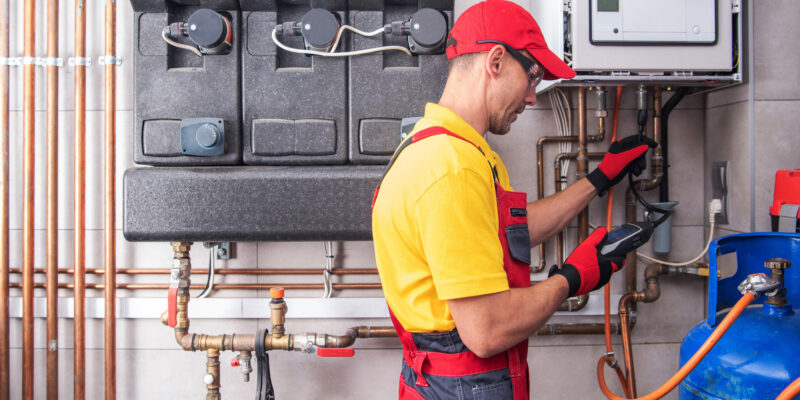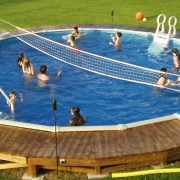With today’s strict safety standards and progressive environmental consciousness, it is imperative that schools modernize their infrastructure to foster optimal learning environments for students.
Retrofitting can significantly improve energy efficiency and sustainability, reducing operational costs and promoting environmentally responsible practices. Furthermore, modernized facilities with improved lighting, acoustics, and indoor air quality foster better concentration, productivity, and overall student performance.
Whether addressing the challenges of aging infrastructure or integrating cutting-edge design and technology, this quick guide will offer insights into retrofitting your school buildings.
1. Assess The School Buildings
Assessing your school buildings before retrofitting is a prerequisite for identifying faults and pointing out the areas that need improvement. It should give you a clearer picture of your buildings’ current condition to create a work plan that fits your retrofitting goals.
Below are things to do when assessing your school buildings during retrofitting:
- Check the buildings’ current energy usage: Analyzing a school’s current energy consumption provides a baseline for comparison and helps prioritize retrofit measures that can achieve the most significant energy savings. This assessment typically involves reviewing utility bills, tracking energy usage trends, and performing energy audits, which can uncover inefficiencies in lighting, insulation, and building systems.
- Assess your HVAC system: Evaluating the HVAC system’s performance and condition helps identify outdated or inefficient equipment that may require upgrades or replacements. Properly functioning HVAC systems can reduce energy consumption, lower operational costs, and create a healthier learning environment for students and staff, so it’s essential to identify common HVAC problems.
- Check your school’s water usage: By monitoring water consumption and identifying areas of excessive use or leaks, schools can implement water-saving measures and adopt more sustainable practices. Retrofitting with water-efficient fixtures, rainwater harvesting, and innovative irrigation systems can significantly reduce water usage and lower utility bills while promoting environmental stewardship.
- Identify your buildings’ envelope: The envelope includes elements such as walls, roofs, windows, and doors, which play a critical role in determining thermal comfort, energy efficiency, and indoor air quality. By assessing the current state of the building envelope, one can identify areas of weakness or inefficiency, such as air leaks, inadequate insulation, or suboptimal window performance.
It helps to assess your school building adequately before retrofitting. You can leverage help from Budderfly’s energy efficiency for schools program or similar others to make multi-level HVAC upgrades and install, maintain, and monitor your energy usage.
2. Develop A Retrofitting Plan
The assessment results can offer a retrofitting blueprint for a comprehensive action plan. Based on the assessments, determine the most pressing concerns, such as safety, energy efficiency, comfort, accessibility, or technology integration.
You can then develop clear and achievable objectives that address the identified priorities. These goals should be quantifiable, allowing for progress tracking and evaluation. For example, you might aim for a specific percentage reduction in energy and water consumption or an improvement in indoor air quality.

Once priorities and objectives have been established, it is crucial to determine the financial resources available for the retrofitting project. This may involve researching potential funding sources such as grants, loans, or public-private partnerships. Develop a detailed budget that weighs the costs of the retrofitting measures against the anticipated long-term benefits and savings.
You must also create a realistic timeline for the project, accounting for the various phases, including planning, design, construction, and commissioning. Consider the potential disruptions to the school’s activities and plan accordingly to minimize the impact on students and staff.
3. Engage Stakeholders
Collaboration with stakeholders is essential in creating an effective retrofitting plan. Engage school administrators, facility managers, teachers, students, and community members to gather their insights and ensure diverse perspectives are considered in decision-making. This collaborative approach will enhance the project’s quality and foster a sense of shared ownership and accountability among stakeholders.
Involving your stakeholders in decision-making will help increase buy-in and support as they may feel more invested in the project. It also facilitates your decision-making by gaining insight from multiple perspectives.
4. Involve A Seasoned Contractor
Working with an experienced contractor ensures high-quality results. The knowledge and expertise, quality artistry, and proper understanding of building codes and regulations can be helpful. That said, a proficient retrofitting contractor should meet the following criteria.
- Experience: A contractor with a proven history of successful projects demonstrates their competency in handling similar tasks, understanding potential challenges, and applying best practices to achieve desired outcomes. Experienced contractors can also provide valuable insights and recommendations based on their expertise, contributing to smoother and more efficient project execution.
- License And Certification: Licenses and certifications are indicators of a contractor’s professional qualifications and adherence to industry standards. Hiring a licensed and certified contractor ensures that your retrofitting project will be conducted in compliance with local codes and regulations while benefiting from up-to-date industry practices.
- Effective Communication: A contractor with solid communication skills can facilitate informed decision-making, keep stakeholders updated on project progress, and promptly address any issues, ensuring a successful retrofitting project.
- Flexibility And Versatility: A flexible and versatile contractor can effectively respond to unforeseen circumstances, adjust their approach, and accommodate specific project requirements or constraints. This adaptability can be particularly valuable in retrofitting projects, where unexpected issues may emerge due to the unique characteristics of existing buildings. It helps ensure the project remains on track and meets the established goals.
A good retrofitting contractor should demonstrate all the qualities above to ensure that the expected output matches the standards you require.
Conclusion
Retrofitting your school buildings can help you improve safety and energy efficiency, including cutting electricity costs and water usage. It also enhances your buildings’ functionality and ensures environmental safety. It’s vital that you understand your way around this practice to keep your students and staff safe while improving the service quality.














Comments